FPGA
-

Running CDC Analysis with Xilinx Parameterized Macros
Designing FPGAs that use a single clock domain is a luxury that very few of us have. Modern FPGA designs must cope with multiple clocks running at different frequencies, very often asynchronous to each other, and still be expected to work reliably. Xilinx Parameterized Macros (XPM) can be used to implement CDC, FIFO and BRAM… Running CDC Analysis with Xilinx Parameterized Macros
-
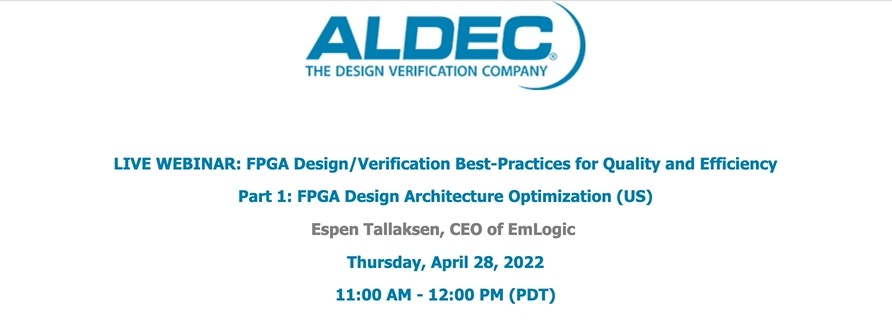
Webinar: FPGA Design Architecture Optimization
The FPGA design architecture is the single most important and primary factor in achieving development efficiency, quality and reliability. The difference between a good and a bad design architecture can be about 50% of the workload and a high degree of detected and undetected bugs. Most design architectures can be improved and optimized to increase… Webinar: FPGA Design Architecture Optimization
-
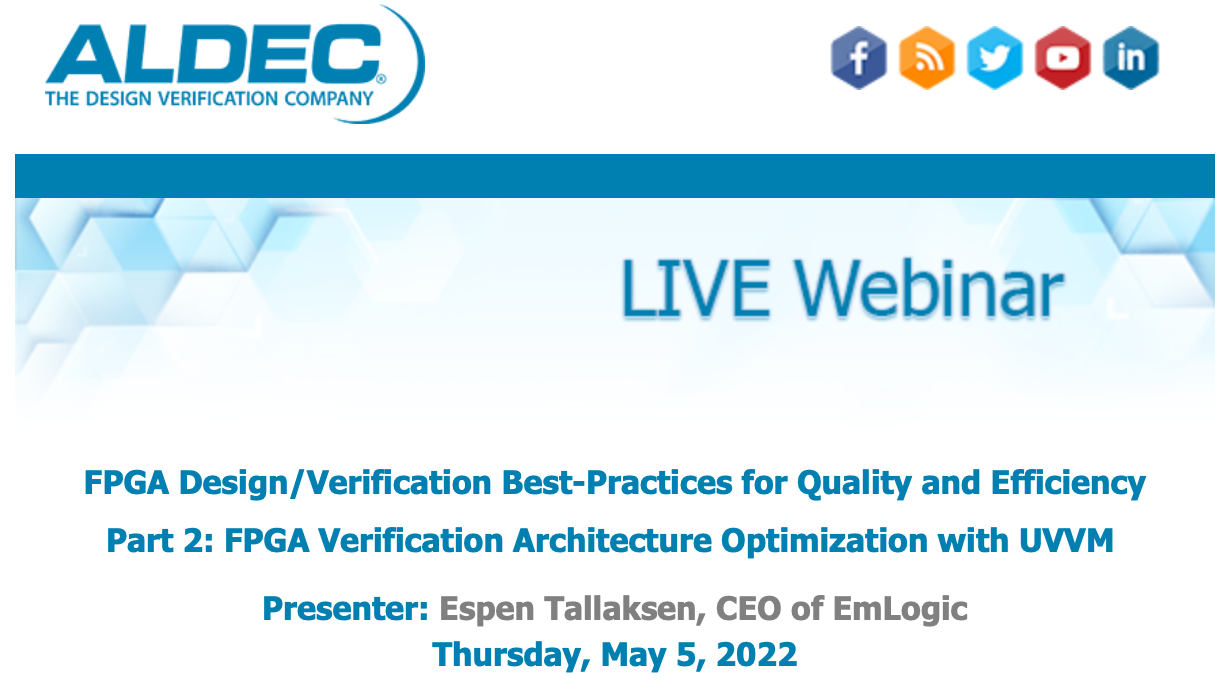
FPGA Verification Architecture Optimization with UVVM
Presenter: Espen Tallaksen, CEO of EmLogic Thursday, May 5, 2022 Abstract: For most FPGA projects, over 50% of the overall project time is spent on verification. This time can be significantly reduced if the verification architecture is well-structured and developed with a focus on reuse. In this webinar, we will show you how to make… FPGA Verification Architecture Optimization with UVVM
-

FPGA Design/Verification: Randomization
Randomization is very important for modern verification. Still, very few designers apply randomization sufficiently in their testbenches. This means they are missing out on a very important method for finding potential bugs in their design, and as a result their products have significantly more undetected bugs. Randomization can be used in many ways, but it… FPGA Design/Verification: Randomization
-
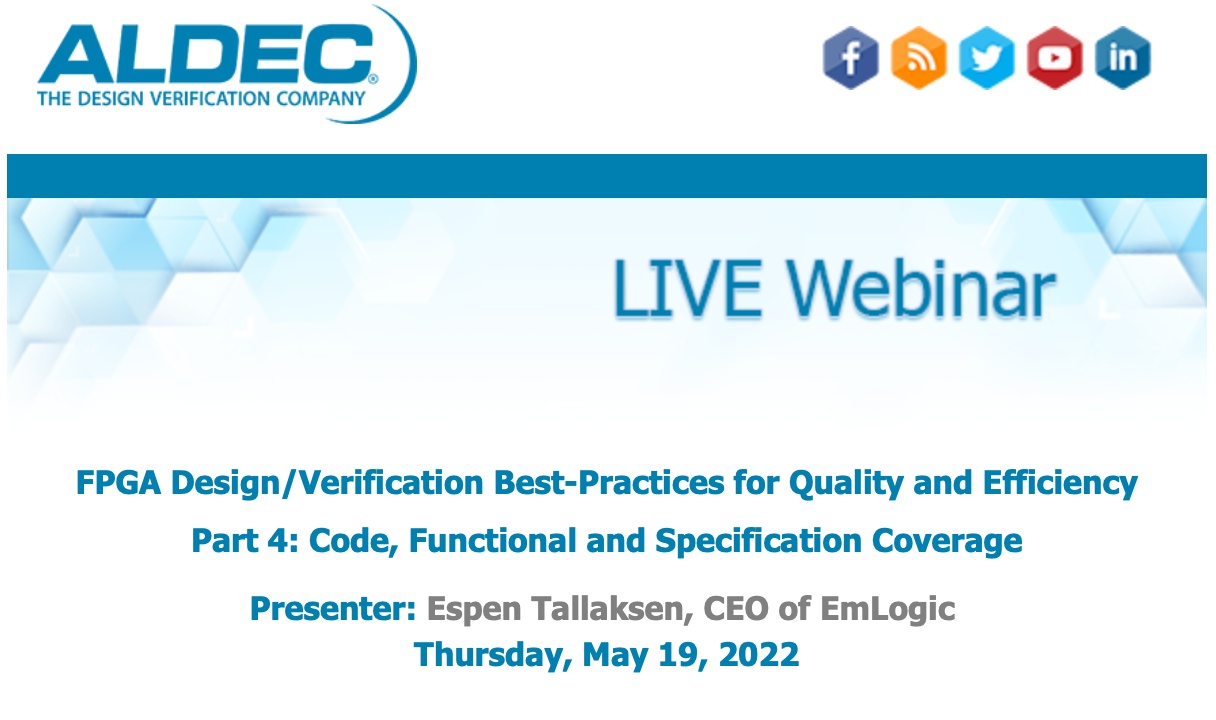
FPGA Design/Verification: Code, Functional and Specification Coverage
Functional coverage is often mentioned together with constrained-random verification, and this is a great combination. However, functional coverage is also very useful even if you have no randomization at all. This is a great method for ensuring that you are in fact checking the right things in your testbench. Unfortunately, not many designers are applying… FPGA Design/Verification: Code, Functional and Specification Coverage
-
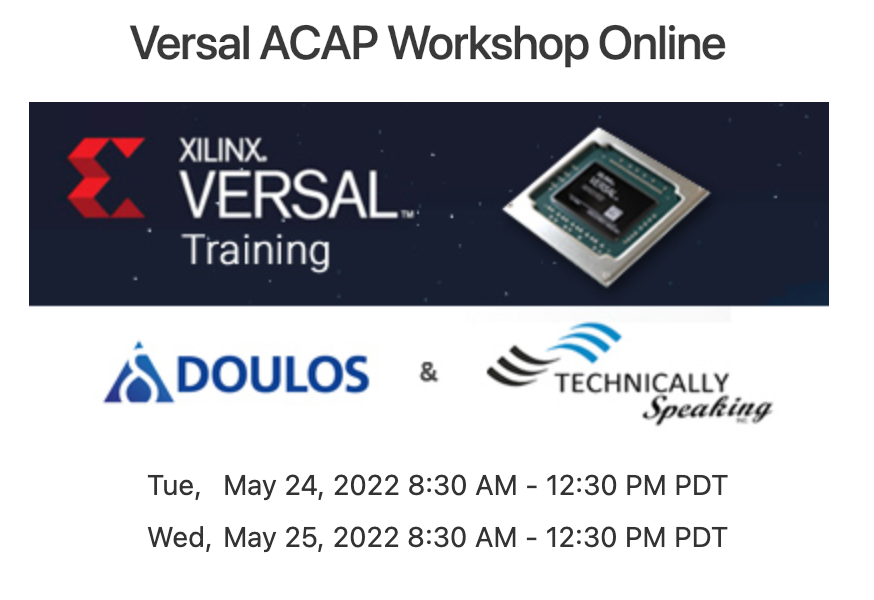
Versal ACAP Workshop Online
The Xilinx Versal ACAP platform is multi-featured, offering unprecedented system level performance and integration. This informative workshop (delivered in 2 half day sessions) is a comprehensive and practical introduction to the features and capabilities. We’ll first cover the broader Versal ACAP device. We’ll then focus on a practical example, optimizing a given application for the… Versal ACAP Workshop Online
-
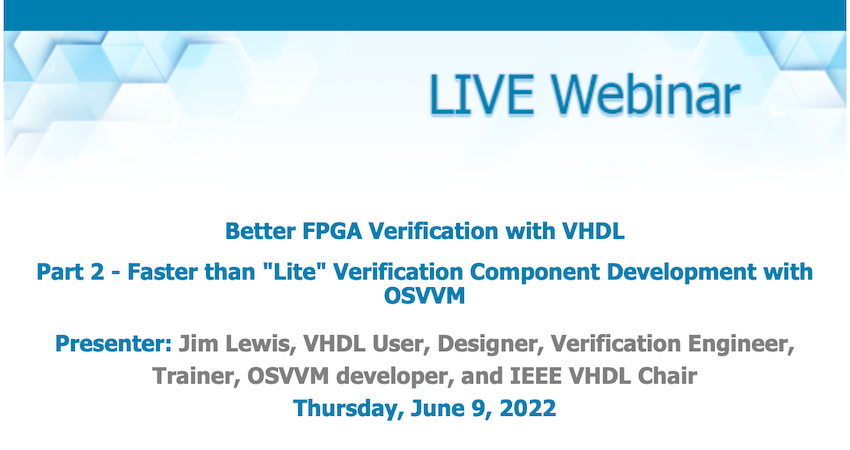
Better FPGA Verification with VHDL – Faster than “Lite” Verification Component Development with OSVVM
Some methodologies (or frameworks) are so complex that you need a script to create the initial starting point for writing verification components, test cases, and/or the test harness. SystemVerilog + UVM is certainly like this. There are even several organizations that propose that you use their "Lite" or "Easy" approach. Creating a verification component (VC)… Better FPGA Verification with VHDL – Faster than “Lite” Verification Component Development with OSVVM
-
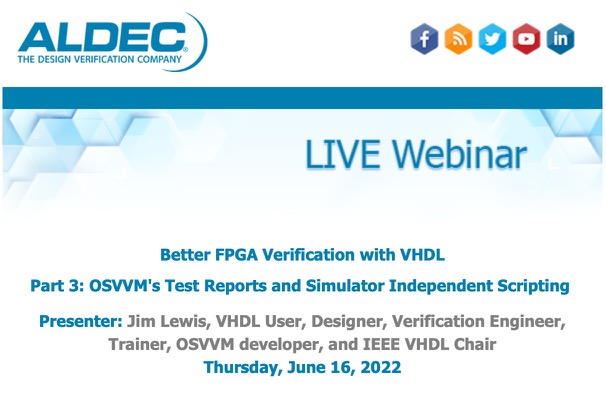
OSVVM’s Test Reports and Simulator Independent Scripting
According to the 2020 Wilson Verification Survey FPGA verification engineers spend 46% of their time debugging. As a result, we need good scripting to simplify running tests and good reports to simplify debug and help find problems quickly. Scripting can be complicated no matter what language – particularly with EDA tools that need to stay… OSVVM’s Test Reports and Simulator Independent Scripting
-

Advances in OSVVM’s Verification Data Structures
OSVVM has grown tremendously over the last couple of years. This period saw simulator independent scripting, test reporting, model independent transactions, virtual transaction interfaces, and additional verification components, each added and incrementally improved. We have talked about these previously in this webinar series. This webinar focuses on advances in OSVVM data structures. OSVVM's Functional Coverage,… Advances in OSVVM’s Verification Data Structures
-

FPGA-Conference Europe
Hotel NH München Ost Conference Center Einsteinring 20, Munich, Aschheim, GermanyFPGAs have made a regular evolutional leap forward in terms of new approaches and solutions for both hardware- and software developers. The FPGA Conference Europe, organized by ELEKTRONIKPRAXIS and the FPGA training center PLC2, is addressing that progress across all major manufacturers. It focusses on user-oriented, practically applicable solutions that developers can quickly integrate into… FPGA-Conference Europe
-
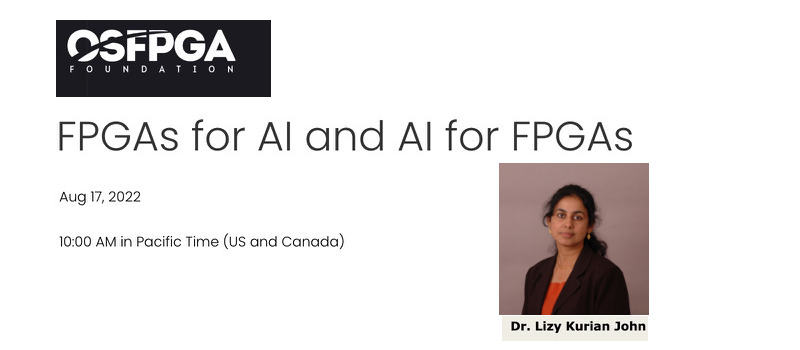
FPGAs for AI and AI for FPGAs
Artificial Intelligence (especially Deep Learning) is rapidly becoming the cornerstone of numerous applications, creating an ever-increasing demand for efficient Deep Learning (DL) processing. FPGAs provide massive parallelism, while being flexible and easily configurable, and also fast and power efficient. These unique properties make them appealing for DL acceleration in both data center and edge use… FPGAs for AI and AI for FPGAs
-

CDC Verification with Hard IP Blocks
Most FPGA designs contain configurable hard IP blocks supplied by FPGA vendors. These Hard IP blocks do not contain synthesizable RTL code, and therefore are excluded from advanced linting. In fact, this is a correct approach as hard IP blocks are assumed to be functionally stable and may be excluded from both static and dynamic… CDC Verification with Hard IP Blocks